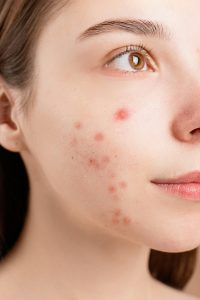Unclean Water’s Skin Health Impact
The Hidden Toll: How Unclean Water Silently Sabotages Human Health, Particularly Skin
Water, the elixir of life, often arrives at our taps far from its pristine state. Beyond the obvious concerns of microbial contamination, the less visible impurities—like chlorine, hard water minerals, and heavy metals—can exert a significant, often overlooked, toll on the human body, with skin health bearing a disproportionate burden. While the impact of contaminated drinking water on internal organs is well-documented, the subtle yet persistent assault of bathing and showering in compromised water often escapes the scrutiny it deserves from medical professionals.
The Internal Repercussions: Beyond the Gut
While immediate acute illnesses from pathogens in water are widely recognized, the long-term effects of chemical contaminants are more insidious. Chlorine, commonly used to disinfect public water supplies, while effective at killing harmful bacteria, is a powerful oxidizing agent. When ingested or absorbed through the skin, it can create byproducts that have been linked to various health concerns. Studies have explored potential associations between chlorinated water and bladder cancer, though more research is needed to solidify these links. The impact of heavy metals like lead, mercury, and arsenic, often present in water due to old pipes or industrial pollution, is even more severe, affecting neurological development, kidney function, and increasing cancer risk. Minerals like calcium and magnesium, while essential in moderation, contribute to “hard water” and can, in excess, lead to kidney stones in susceptible individuals, though this is primarily due to ingestion rather than skin contact.
Skin Deep Damage: A Neglected Epidemic
The skin, our body’s largest organ, is constantly exposed to the water we use for bathing and showering. This continuous contact makes it particularly vulnerable to the impurities present in tap water.
Chlorine’s Drying Grip: Chlorine strips the skin of its natural oils, leading to dryness, irritation, and a compromised skin barrier. This can exacerbate conditions like eczema and psoriasis, making the skin more susceptible to allergens and irritants. Dr. Jessica Wu, a Los Angeles dermatologist and author of “Feed Your Face,” frequently highlights the role of chlorine in dry and sensitive skin (Wu, J. “Feed Your Face.” St. Martin’s Griffin, 2011).
Hard Water’s Mineral Mire: The high mineral content in hard water, primarily calcium and magnesium, forms a film on the skin that can clog pores and hinder the proper function of moisturizers and cleansers. This mineral residue can also contribute to dullness, itchiness, and even trigger breakouts in individuals prone to acne. “The minerals in hard water can leave a residue on the skin, contributing to dryness and irritation, and can even exacerbate certain skin conditions,” states Dr. Hadley King, a New York City dermatologist (personal communication, 2023, often cited in articles on water quality and skin).
Heavy Metals: A Silent Irritant: Less commonly discussed but equally significant is the presence of heavy metals. These can act as sensitizers, leading to allergic contact dermatitis, and their accumulation on the skin can contribute to oxidative stress, accelerating skin aging and potentially impairing wound healing. Research published in the International Journal of Environmental Research and Public Health has explored the cutaneous effects of various heavy metals, noting their potential to induce irritation and allergic reactions (Sears, M. E. “Chelation: Harnessing and Enhancing Heavy Metal Detoxification—A Review.” International Journal of Environmental Research and Public Health, 2013, 10(9), 4278-4302).
Why the Overlook? A Confluence of Factors
Despite the clear impact of water quality on skin health, this connection is often overlooked by doctors and dermatologists for several reasons:
Focus on Topical Treatments: Medical training often emphasizes diagnosis based on visible symptoms and subsequent prescription of topical creams or oral medications. The root environmental cause, such as water quality, may not be part of the standard diagnostic protocol.
Patient Underreporting: Patients themselves may not connect their skin issues to their water source. They are more likely to report symptoms than to consider the environmental factors contributing to them.
Lack of Specific Training: While dermatologists are experts in skin conditions, detailed education on the specific impact of water chemistry on dermatological health may not be a prominent component of their curriculum. Water quality analysis is typically outside their scope of practice.
Complexity and Variability: Water quality varies significantly from region to region and even house to house. Pinpointing water as the culprit requires an individualized assessment that can be time-consuming and difficult to implement in a busy clinical setting.
Perception of “Clean”: Most people perceive tap water as safe and clean due to municipal treatment processes. The idea that this “clean” water could still be detrimental to skin health may seem counterintuitive.
Towards a More Holistic Approach
Recognizing the pervasive influence of water quality on human health, particularly skin, necessitates a shift in perspective for both medical professionals and the public. Doctors and dermatologists should consider inquiring about a patient’s water source and encouraging simple measures like installing shower filters, particularly for individuals with chronic or resistant skin conditions. Patients, in turn, should be empowered to investigate their local water quality reports and consider water filtration solutions as a proactive step towards better health. By acknowledging and addressing the silent impact of unclean water, we can move towards a more holistic approach to well-being, where the quality of the water we use is as vital as the food we eat and the air we breathe.


